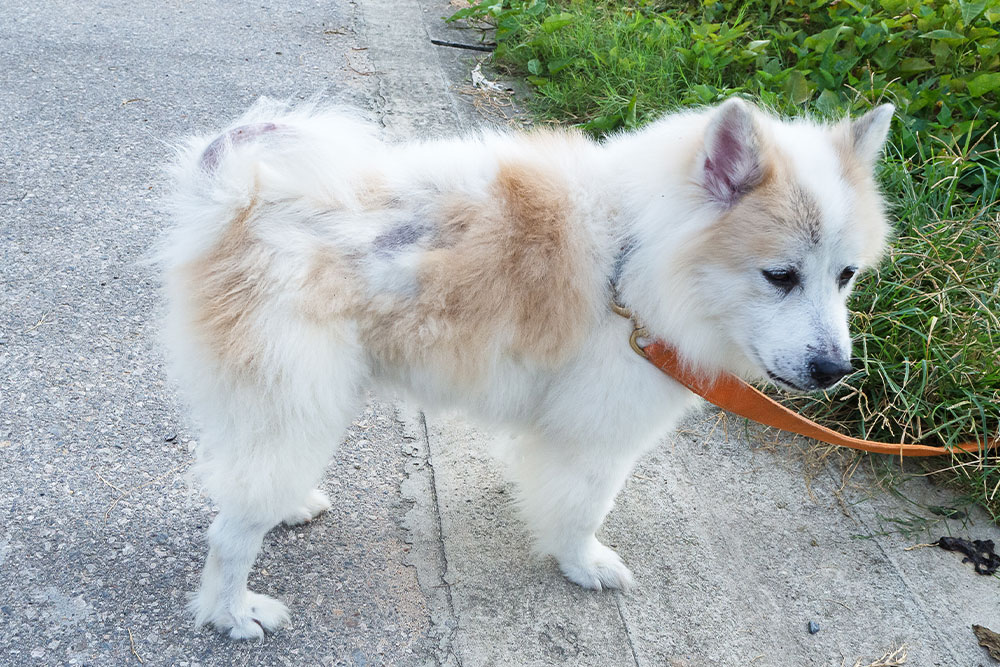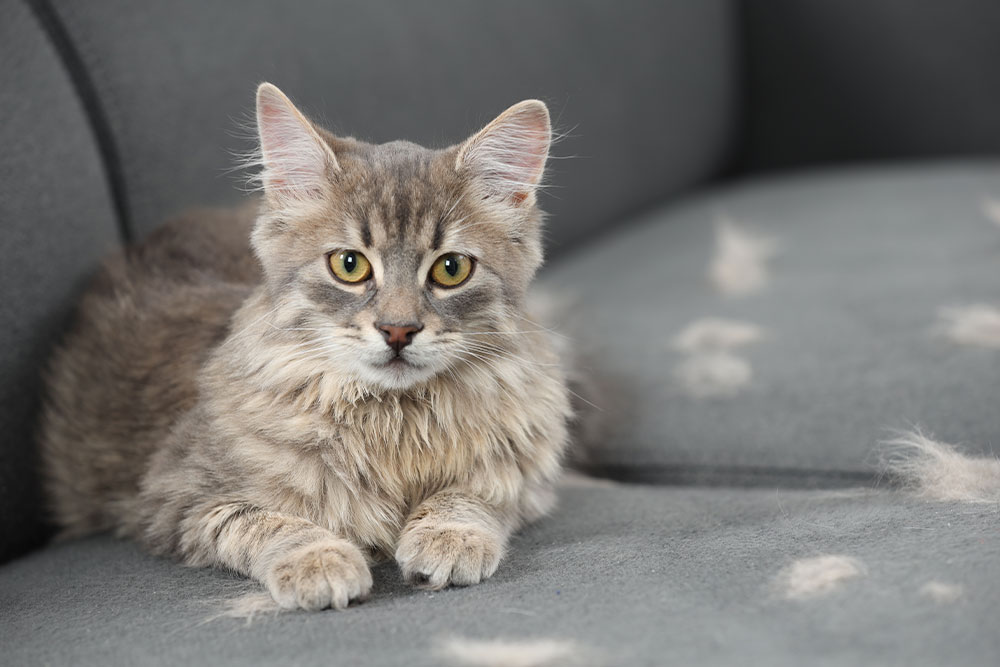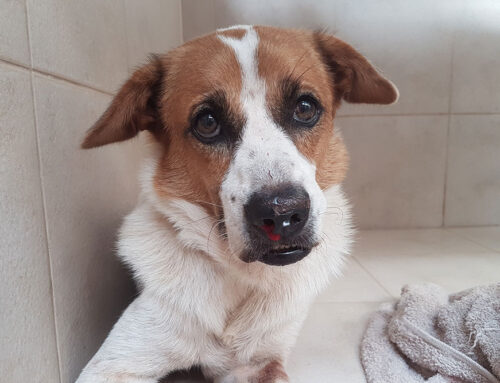Noticing bald spots, thinning fur, or excessive shedding in your pet can be alarming. Whether your cat is overgrooming or your dog is scratching non-stop, hair loss—known medically as alopecia—is more than a cosmetic issue. It often signals an underlying problem that needs attention.
At North Waterloo Veterinary Hospital in Elmira, Ontario, we know how unsettling it can be when your pet’s coat starts to look patchy or irritated. That’s why we take a personalized, diagnostic-driven approach to understanding and treating hair loss in both dogs and cats. In this guide, we’ll walk you through what causes alopecia, what to look for, and how we can help your pet feel better—inside and out.
What Is Alopecia in Pets?
Alopecia refers to abnormal hair loss, not to be confused with typical seasonal shedding. It may appear as small, localized bald spots or affect large areas of your pet’s body. Hair loss may come with additional symptoms like itching, scabs, redness, or changes in skin texture—each of which provides valuable clues about the root cause.
Alopecia can affect pets at any age and may develop suddenly or gradually over time.
Common Causes of Hair Loss in Dogs and Cats
There are several potential causes of alopecia, each requiring a different treatment approach. Understanding these causes is key to resolving the issue and preventing recurrence.
1. Parasites
Fleas and mites are among the most common triggers. Flea allergy dermatitis—especially prevalent in cats—can cause intense itching and secondary skin infections. Learn more about flea allergies in cats.
2. Allergies
Pets can develop allergic reactions to:
- Environmental allergens (pollen, dust, mold)
- Food ingredients
- Contact irritants (certain shampoos, cleaners)
Allergies can cause chronic itching, inflammation, and hair loss. Explore more on dog allergy symptoms and treatments.
3. Infections
- Fungal infections like ringworm (which is contagious to humans)
- Bacterial skin infections that result from scratching or underlying issues
These conditions often require immediate veterinary attention.
4. Endocrine Disorders
Hormonal imbalances can severely impact your pet’s skin and coat:
- Hypothyroidism in dogs
- Cushing’s disease
- Diabetes or other metabolic conditions
- Exposure to human hormone medications, like estrogen and testosterone creams
These disorders often present with symmetrical hair loss and other systemic symptoms.
5. Behavioral Causes
Stress, anxiety, or boredom can lead pets—especially cats—to overgroom, lick, or chew on their fur. This is known as psychogenic alopecia.
6. Nutritional Deficiencies
Pets on unbalanced or improperly formulated diets may develop skin and coat issues. While rare with commercial diets, it can occur with homemade or low-quality food.
Why Hair Loss Shouldn’t Be Ignored
Hair loss is often a sign of something more than skin deep. Left untreated, alopecia can lead to:
- Secondary infections
- Chronic inflammation
- Pain and discomfort
- Zoonotic risk (in cases like ringworm)
That’s why it’s important to take action early—both for your pet’s comfort and your peace of mind.
Signs and Symptoms to Watch For
In addition to bald patches, you may notice:
- Excessive licking, scratching, or chewing
- Dull, flaky, or greasy coat
- Red, inflamed, or scabbed skin
- Changes in skin pigmentation
- Behavioral changes (like restlessness or hiding)
More advanced cases might also involve lethargy, weight loss, or appetite changes—especially when hormonal or internal issues are involved.
What to Expect During Your Visit
When you bring your pet to North Waterloo Veterinary Hospital, we start with a full physical exam and targeted diagnostics based on your pet’s history and symptoms.
Diagnostic Testing May Include:
- Skin scrapings to check for mites or mange
- Fungal cultures for ringworm
- Bloodwork to evaluate hormone levels and overall health
- Allergy testing to identify environmental or food-related triggers
This comprehensive approach allows us to tailor a treatment plan that addresses both symptoms and underlying causes.
Treatment Options: What We Might Recommend
Once we understand what’s causing your pet’s alopecia, we’ll build a treatment plan that may include:
- Parasite Control
Year-round flea and tick prevention is essential. Here’s why it matters. - Allergy Management
Depending on the cause, this might include prescription diets, antihistamines, corticosteroids, or immunotherapy. - Treatment for Infections
Antifungal or antibiotic medications (topical or oral) will be used for bacterial or fungal infections. - Hormonal Therapy
Endocrine conditions like hypothyroidism may require long-term hormone replacement therapy. - Stress Reduction
Environmental enrichment, anxiety-reducing strategies, and sometimes medication can help manage behavioral overgrooming.
What Happens If It’s Left Untreated?
If alopecia is ignored, symptoms can worsen and quality of life can decline. Untreated conditions may lead to:
- Chronic itch-scratch cycles
- Skin infections and sores
- Emotional distress or aggression from discomfort
- Missed diagnosis of a systemic illness
- Permanent hairloss
That’s why we emphasize early action—before it escalates.
At-Home Care and Preventive Tips
Hair loss isn’t always preventable, but consistent care can minimize risk and help you catch issues early.
Try These Prevention Tips:
- Keep your pet on a balanced diet
- Stay current on parasite preventatives
- Maintain a low-stress environment
- Brush your pet regularly to detect skin changes early
Learn why grooming matters
Preparing for Your Appointment
Bringing the right information can make your visit more productive. We recommend:
- Photos or videos of the affected areas
- A log of symptoms and any changes over time
- A list of all medications, supplements, and foods
- Your questions or concerns
The more we know, the better we can help.
Frequently Asked Questions
Q: Is hair loss always serious?
Not always—but it should never be ignored. Even minor issues like fleas can lead to complications if untreated.
Q: Can stress cause hair loss in cats and dogs?
Yes, particularly in cats. Stress-related overgrooming is a common behavioral cause.
Q: How long does it take for hair to grow back?
It depends on the cause. Some pets show improvement within weeks, while others may take longer or need ongoing management.
We’re Here to Help
Hair loss can be frustrating—but you don’t have to navigate it alone. At North Waterloo Veterinary Hospital, we’re dedicated to identifying the cause and providing effective, compassionate care. If your dog or cat is experiencing unusual hair loss or skin issues, contact us or request an appointment today. Together, we’ll find the answers and bring relief to your pet—and peace of mind to you.








Leave A Comment